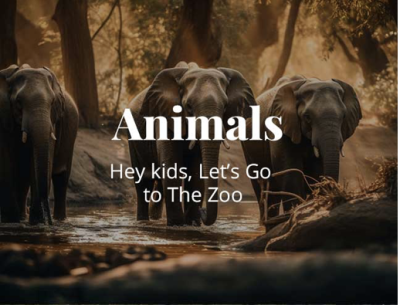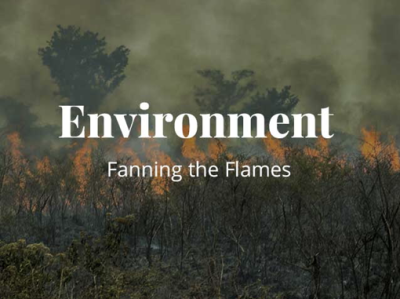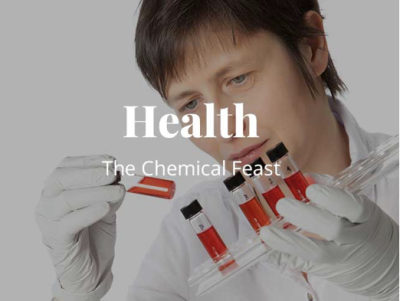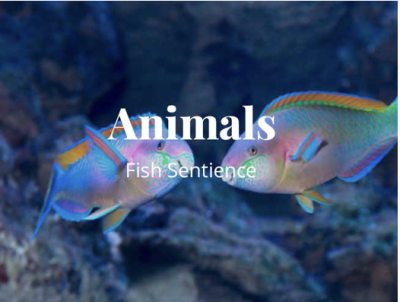Vegetable & Tempeh Wellington with Rich Shiitake Gravy

This recipe may take a bit of preparation but it’s well worth it. Rather than making your own pastry, a short cut option that I offer here is to purchase an organic vegan pastry from the frozen section of your natural food store. With a plethora of roasted root vegetables, creamy mashed potatoes and gravy, it’s our go-to festive meal year after year. I would recommend making the vegan egg wash before assembling the wellington.
250 g pack vegan puff pastry
225 g pack organic tempeh, cubed and marinated
1 bunch spinach, chopped
6 medium Portobello mushrooms, sliced ¼ inch thick
Pinch sea salt
2 tbsp red wine
2 cloves garlic, minced
2 large leeks, white part only, trimmed and cut into ½ inch slices
2 cups celery, thinly sliced
2 cups red onion, thinly sliced
2 cups carrots, thinly sliced
1 tbsp tamari
½ tsp dried sage
½ tsp dried thyme
1 large carrot, thinly cut on the diagonal and steamed
Basil pesto
To braise the tempeh
225 g pack organic tempeh
1 tbsp shoyu
1 tbsp rice mirin
1 tbsp ume plum seasoning
½ tbsp freshly squeezed ginger juice
1 clove garlic, crushed
½ tsp dried mixed herbs
Cut the tempeh into bite-sized cubes. Add all the other ingredients to a jar, close the lid tightly and shake well to mix.
To cook the tempeh
Warm a little filtered water in a heavy-based pan over a low-medium heat, add the tempeh cubes and cook covered for 5 minutes. Pour over the marinade, cover and cook on a low heat for 25 minutes, adding water if the pan dries out. Transfer to a large bowl.
The pastry
Follow the instructions on your pastry packet for thawing. Remove the pastry from the box and lay on a baking tray lined with parchment paper. Let sit for 15 minutes then gently roll and allow the pastry to come to room temperature.
The greens
Bring a small pan of filtered water to a boil. Pop the spinach into a steamer basket. Cover and steam the spinach for a 1–2 minutes until wilted. Transfer to a small plate and set aside.
The mushrooms
In a heavy-based pan, heat a little filtered water and cook the mushrooms with a pinch of sea salt for 7–8 minutes. Add the red wine and allow to soak into the mushrooms; cook until the pan is dry. Remove the mushrooms to a bowl and set aside.
The filling
Using the same pan, add a splash of filtered water and sauté the garlic, leeks, celery, onions and carrots, tamari and herbs. Cook for 5–7 minutes. Remove from the pan and allow the mixture to cool. Add this mixture to the tempeh bowl, use a paper towel to blot any moisture from the mixture, then transfer to a dish and chill in the fridge.
The secret to a deliciously juicy yet flaky wellington is to pat everything dry and make sure it is completely cold before wrapping it in your vegan puff pastry.
Stuffing the wellington
Preheat the oven to 200°C (400°F), gas 6. Layer the mushrooms onto the prepared pastry sheet, spreading them evenly along the edge of the pastry nearest to you. Layer some of the filling on top of the mushrooms, then the spinach, and top with a layer of the steamed carrots. Add a thin layer of basil pesto along the full length of the filling. Very carefully fold the pastry over the top of the mixture and press down to seal the edges. Trim any excess pastry and crimp around the edges with the back of a fork.
Using a sharp knife, score diagonally across the pastry in both directions. Put in a couple of vents by pushing a sharp knife down into the middle of the pastry.
To make the egg wash
1 tbsp aquafaba (chickpea water)
1 tbsp almond milk
½ tsp maple syrup or brown rice syrup
To make the vegan egg wash, whisk all of the ingredients together in a bowl. Using a pastry brush, very lightly coat the wellington. Place the baking tray with the wellington in the freezer for 10 minutes before repeating with another layer of vegan egg wash, and freezing for a further 10 minutes.
Place the baking tray in the oven for 30–35 minutes, or until golden and flaky. Beautifully layered colours of delicious vegetables encased in puff pastry will be the end result, and served with some shiitake gravy is heaven on earth. Makes 8 servings.
Note – Use any remaining filling and leftover pastry to make mini pastries that are great for snacks or picnics. The leftovers also work well as a pie filling.
Rich Shiitake Gravy
Bring on the gravy! This shiitake mushroom gravy is full of flavour and is perfect for anytime of the year. Serve this luscious, low-fat mushroom gravy over mashed potatoes, wellington or shepherd’s pie. It’s easy to make, comforting and delicious!
4 inch (10 cm) piece of kombu
3 large dried shiitake mushrooms
2 cups fresh shiitake mushrooms, thinly sliced
1 small onion, diced
2 cloves garlic, chopped
2 heaped tbsp kuzu
2 tbsp tamari or shoyu
2 tbsp rice mirin
½ teaspoon dried thyme
Soak the kombu and dried shiitake mushrooms in 3 cups of filtered water for 30 minutes.
Remove the mushrooms from the water and slice the caps thinly, discarding the stems
along with the kombu. Reserve the soaking water. Heat a splash or two of filtered water in
a saucepan and sauté the dried shiitakes, fresh mushrooms, garlic and onion over a
medium heat for about 5 minutes. Dissolve the kuzu in two tablespoons of filtered water.
Add to the saucepan and stir constantly while slowly adding the soaking water. Keep
stirring until the gravy begins to simmer and thicken. Add the tamari or shoyu, mirin, and
thyme and simmer gently for 15 minutes. Blend to a cream if desired. Makes 4–6 servings.
Society - Access to Good Food Should Be Easy

Consider this, there are over 800 million people who live in a state of hunger. This figure is contrasted against the 700 million who are obese. 17% of the Children in America live with food scarcity. Many industries including agriculture have contributed to shortages of drinkable water. This is in an America where there is a water menu in high–end restaurants so that guests can choose the pure water of their choice.
Consider this, the modern food web means that local farmers lose their land and are forced to work on plantations that grow food for export rather than raise food for their own families and community.
Consider this, developed countries such as America have food desserts where the only foods available to urban populations are fast-foods and there is little or no access to fresh produce. Fast food, manufactured to sell at a cheap price is a criminal enterprise that results in disease and obesity among children and the poor.
1.2 million people in the UK are living in low-income areas where households struggle to buy affordable fresh fruit and vegetables, according to a new study.
For people living in a food desert this can mean having to dedicate a part of an already stretched budget toward transportation costs to purchase the food they need. It can mean having to carry their food shopping a long distance. This is a particular problem older people living in these nutritionally deprived areas.
It is likely people living in the food desserts who will pay a higher cost for their weekly food shopping and must shop in more expensive small convenience stores. These shops usually have a limited stock of good value fresh products.
Forty-one per cent of these households don’t have a car, making it even harder to get to a wide range of good value food stores. One in eight people surveyed for the report say that not being near a supermarket offering healthy food at low prices stops them eating more healthily. The situation in America is similar.
Nearly 39.5 million were living in low-income and low- access areas, according to the USDA’s most recent food access research report, published in 2017.
Within this group, researchers estimated that 19 million people — or 6.2% of the nation’s total population — had limited access to a supermarket or grocery store. This reflects the total neglect of the health of the next generation. It feeds the greed and arrogance of a food industry focused on profit above health, it is an important force in the creation of the epidemic of obesity and diabetes that is running wild in the affluent countries of the world.
WHAT YOU CAN DO
Significant changes in the food web can happen in response to consumer action. Most food in the food deserts are made by fast food outlets and snack food manufactures. Any support you give by purchasing food items from them promote the system. This includes green washed products such as “vegan” or “natural” items that show up on fast-food menus. A “vegan burger” in a fast-food outlet is simply a way of signalling change and not a sincere move to improve the healthy options. It is important to support community outreach that makes fruit, vegetables, and local organic foods available to a wider market.
Animals - Hey kids, Let’s Go to The Zoo

Many American and British people are repulsed by the idea that people in China, Korea, or other parts of the world eat dogs. The practice is called a barbaric habit and uncivilized. Horsemeat is consumed in France, Belgium, and Hungary, as well as in Mongolia and Japan. The English-speaking world is horrified—these are our pets!
In 2013, when horsemeat was found in supermarket beef patties, there was outrage. In some cases, the meat patties were 100 percent horsemeat. The legal issue was that it illustrated the difficulty involved in tracing the origin of any meat product. There was no health concern; the horsemeat would have been healthier than beef from a standard nutritional point of view. The public concern was that they were horses!
We domesticate cats and dogs to provide amusement and companionship. Foxes, minks, rabbits, and chinchilla are raised so that we can remove their skin and use their fur. We would not eat a fox; we would only wear it. We pull the feathers out of geese because they can keep us warm in a jacket with a collar made of coyote fur. We have decided that some animals are off-limits for eating, and others are OK.
Most people would agree that the killing of wild, rare, and endangered animals is wrong. It is not wrong to put them in cages with concrete floors, behind bars, or in confined spaces. Putting them in a zoo is OK; it’s educational.
African elephants in the wild may require up to 24 square miles as a “home range.” This is considered a healthy habitat. A captive elephant in a zoo may be given two or three acres if lucky. A trained bear kept in a cage to dress up and ride a bike would have ten to twenty square miles to roam in a healthy environment. She would also hibernate through the winter. This would be like letting you live in your bedroom closet for the rest of your life. So much for entertainment.
If we continue to think of the other animals, we share planet earth with as “the other”, with only value as food or entertainment we will continue to destroy the source of our being. All forms of life have a purpose within the web of nature.
“A human being is a part of the whole called by us universe, a part limited in time and space. He experiences himself, his thoughts and feeling as something separated from the rest, a kind of optical delusion of his consciousness. This delusion is a kind of prison for us, restricting us to our personal desires and to affection for a few persons nearest to us. Our task must be to free ourselves from this prison by widening our circle of compassion to embrace all living creatures and the whole of nature in its beauty.”
Albert Einstein
WHAT YOU CAN DO
Encourage your friends and family to learn about animals from videos. Video footage of animals in their wild habitat give a much more accurate picture of who they are and how they live. Using animals for food or entertainment makes them objects and not sentient beings. It is important that we are aware of the simple fact that we share the planet with all life and that all life has intrinsic value.
Environment - Fanning The Flames

While we were writing this issue of our newsletter, we followed the news of the tragic wildfires that burned the village of Lahaina in Hawaii to the ground. Of this writing there are close to 100 people who are confirmed dead and the whole area surrounding the city has been burned to the ground. This follows five years when fires have ravaged forest lands and small towns around the world. The Lahaina fire was only challenged by the fire that devastated Paradise California in 2018 in terms of loss of life. We are rightfully saddened by these tragedies but not enough to talk clearly about their cause.
Over the years since the California fires, we have witnessed the largest bushfires in Australia as well as massive fires in the arctic, the Amazon, Washington, Oregon, and Central Asia. Already this year Greece, Spain, Italy and Portugal have experienced unprecedented fire seasons and the predictions are there are more to come.
These fires are the result of the hottest temperatures recorded since the 1800’s. Lack of rain leading to drought, exceeding drying out of brush and forests and grass lands have created a perfect tinder box for present and future fires. It is difficult to ignore these unique conditions, yet some will.
The human effect on climate is creating unpredictable and extreme conditions. They reflect not only the increase in hot temperatures, but also unpredictable climate influences caused by warming oceans, extreme storms, and wind conditions. All of these create effects beyond human control.
The fires, and floods and storms all displace populations destroy valuable forests, kill animals and lay down conditions which will make the following seasons worse.
Air temperatures on Earth have been rising since the Industrial Revolution. While natural variability plays some part, the greatest influences are human activities. It is the release of greenhouse gases that trap heat and warm the planet that lie at the foundation of these events.
According to Dr Matthew Kasoar at Imperial College’s Leverhulme Centre for Wildfires, Environment and Society, the tinder-dry conditions would make it easier for them to spread.
He said: “Fire risk increases rapidly when there are periods of prolonged hot weather, which allow the soil and vegetation to completely dry out.”
While we feel compassion for those who lost their lives in the burning of Lahaina and the destruction of that beautiful town, it is all a part of a larger tragedy. A tragedy of our own making. It is up to each of us to do our part to help heal the earth and both human and non-human life.
WHAT YOU CAN DO
The doubters and the cynics want us to take our eyes away from the roots of these problems. They want to distract us from the reality that is a global crisis of massive proportions. One of the greatest contributing factors to the breakdown of our healthy ecosystem is the effect of animal agriculture. Pollution to air, water, and soil result from our raising animals to eat and the growing of crops to feed them. Visit our website and learn how you can easily create a healthy vegan diet and become part of the solution, not the problem.
Health - The Chemical Feast

As most of our readers will know, we are supportive of a Whole Foods Plant Based Vegan Diet that is sourced from organic sources as much as possible. Eating in this way is the best way to assure good health as well as being sustainable and earth friendly. The commercial food industry does not want you to eat this way. The industry focus is on the profit margin regardless of the health implications.
An article in the Guardian newspaper (14/08/22) addressed to rise in the use of ultra-processed foods (UPF) for sale in America and the UK. These food items look like any other “convenience” foods you might find in the supermarket, and they have the usual high fat, salt, and sugar ingredients with a ‘something special’ added.
The UPF’s are completely manufactured substances that give industrial food products several advantages. They are cheap to produce, guarantee longer shelf and as a bonus seem to provoke increased appetite for the products, they are used in. They show up in reconstituted meats, sausages, salty snacks, ice cream and frozen meals. In fact, any product that uses additives.
For thousands of years, these patterns continued without deviation as a result of our natural adaptation to the environment. One of the reasons our contemporary Western diet produces imbalances in our health and behaviour is because we have radically changed this pattern of eating through ignorance of its importance. Our contemporary diet is comprised of foods which have been fragmented, over-processed and artificially “enhanced” for economic reasons and without thought to the repercussions.
The thousands of man-made substances now used to colour, flavour, emulsify and preserve our food are alien to our biological history, and the motivation for their use, purely economic. Our bodies quite simply do not know how to use them. There is still a strong tendency to view the body as a machine without fully acknowledging the subtleties of human sensitivity. It is felt by many nutritionists that if there is enough of the basic constituent nutrient in the diet, that health, or at least the lack of dramatic symptoms, can be maintained. Little attention is paid to the importance of the quality of these nutrients and the way they are consumed.
Our body has evolved over millions of years and has an organic familiarity with appropriate foods taken in their natural form. This familiarity comes from millions of years of direct experience. The most dramatic changes in food quality have occurred since the end of World War 11. There has been a dramatic increase in the use of artificial additives, pesticides, herbicides, and other contaminants not previously encountered. It should come as no surprise that it is during this period that the health of human society both physically and emotionally has shown its most extreme deterioration.
Our bodies are attempting to cope as best they can with the traumas produced by radical changes in food consumption which have happened almost overnight relative to the length of time humanity has existed on the planet. By making demands on the body that it is not able to effectively meet, it is no wonder that we become ill and disoriented. We have broken faith with the planet, our past, and ourselves.
WHAT YOU CAN DO
Best advice is to read labels. If there are ingredients that are not recognizable whole foods, proceed with caution. You may be surprised that even trusted “natural” and even organic food products cut corners. Cooking is one of the most important life skills. The more we prepare our own foods the better we can be assured of the best quality food. Learn to enjoy the kitchen. There are many free recipes available on our website that can give you the diversity you may desire.
Society - Inequities in The Food Web

The modern diet is only possible because of the poverty, slavery, and degradation that is suffered by those who produce the food or are trapped in an economic dead-end where only poor-quality food is available to them. We do not often consider where our food comes from, and who did the work to produce it even less.
The idea that every action has an equal and opposite reaction carries a great deal of weight in Western culture. After all, it’s one of Isaac Newton’s laws of motion. The idea is not limited only to the world of measurable particles but is reflected in many common activities. It is expressed in religions and philosophies from around the world and may be one of the most consistent concepts that unite spiritual thought.
In Buddhist, Christian, and Hindu traditions, Newton’s law is expressed in such sayings as “Do unto others as you would have them do unto you” or “You will not be punished for your anger—you will be punished by your anger.” Often these concepts are seen as instructions for rewards or punishment in a future life. In the Eastern religions, they are part of karma. “As you sow, so shall you reap.” Well, if that is true, there is some very uncomfortable reaping on our horizon.
The modern diet causes huge physical damage. Making dietary changes can be challenging for some, but the fear of disease or the desire to live a healthier life can be a powerful motivation. Self-preservation can push us toward healthy eating; however, it barely alters our fundamental attitudes to either food or health. True health encompasses more than measurable physical factors. Health measures mind and spirit as well as bodily functions.
If we make choices out of line with our principles, we find ourselves in a dilemma that undermines our sense of self. But still, we stubbornly refuse to adapt to the unpleasant truth; instead, we tend to freeze or lash out when change is required. But there are consequences—unforeseen and, indeed, unseen—to our refusal to adapt. These unintended consequences often rebound in the suffering of other humans, other species, and the damage to the environment. We could call it the “collateral damage” in our war against nature.
Environmental issues are often the solid backup argument for eating organic food or becoming vegan. Why would anyone interested in creating a sustainable planet continue consuming any animal products? Concern for animals must include the human lives that are sacrificed for our diet. The ethical choice is clear. Creating a comprehensive food ethic requires us to reflect on our concern for all life both human and non-human.
Animals - Fish Sentience

In the more affluent countries of the world and among many health enthusiasts’ fish and other seafoods have been touted as healthy alternatives to mammal meat or poultry and even as a health food. Self-described pescatarian diets have become the rage. They claim that it is the healthiest diet, nothing could be further from the truth. The need for animal sourced protein has been disproven by thousands of scientific studies. This is in addition to the fact that fish are one of the most polluted foods available.
As with many of our planets environmental features we have tended to view the oceans of the world and the life within them through the lens of our economy. We have placed a price on the life within the sea and the minerals beneath it but have not considered the cost. The cost is the wellbeing of future generations. We have also ignored the damage we do to a whole world of sentient life we do not understand and yet feel glad to destroy.
Life within the oceans and rivers of the world are a mysterious and alien realm to humans. Our view of fish is even more distorted than our attitude toward other land animals. Even though science has demonstrated the unique sentience of sea creatures it seems difficult to respect the fact that their life has value to them.
Fish and sea mammals are social creatures. They recognize each other and communicate through sound. The creatures of the sea constantly hold communications with their kind. We are aware of the songs of the whales, but the oceans are a symphony of sound. Creatures speaking in a variety of voices with their own kind.
Fish can remember past social interactions that they’ve had with other fish, and they show affection by rubbing against each other. They display curiosity and are interested in new objects introduced in their environment. They have very complex nervous system and react to painful stimuli the way all animals do—their breathing rate increases, their muscles contract, and they try to escape danger and will fight to the death. Those who fish for sport look forward to these struggles it is the thrill of the catch. The battle between life and death. Once caught, fish die of asphyxiation. It is the equivalent of a human drowning.
It is estimated that over 2 trillion fish are killed by humans every year. This does not factor in the billions of sea animals that are killed in the fishing industry but not economically preferred. An increasing number of fish are raised in fish farms, the aquatic version of factory farms. On these farms, fish spend their whole lives (up to two years) confined in tightly packed spaces. The water can become toxic, and filled with antibiotics, pesticides, parasites, and faeces. A 2-acre fish farm can produce as much waste as a town of 10,000 people.
The results of commercial fishing produce the similar environmental damage as those created by raising land animals. The balance of life within the seas are being disturbed by barbaric methods of fishing with drag nets that scour the sea bottom and indiscriminately pull up all life. Concentration on specific popular fish such as salmon, cod and tuna create an imbalance in the oceans ecosystems that lead to reduction in oxygen producing sea plants. This “trophic cascade” is reducing the ability of the oceans to produce the two thirds of the oxygen needed by the earth.
The solution is simply to stop eating animals. A life based on death is not a healthy life. See how easy it is? Check out our eBook, The Human Ecology Diet, on our website.
Environment- Still Talking After All These Years

Still Talking After All These Years
In 1895, a Swedish scientist by the name of Svante Arrhenius approached the question of potential atmospheric warming due to the presence of heat-absorbing gases. It was a hobby for this Nobel Prize winner. His predictions, made with pen and paper, were nearly spot-on. Arrhenius was unambiguous regarding the reasons the climate would get warmer. The increases in carbon dioxide were due to the increased human activities of combustion processes and burning coal. He was not concerned with this warming and felt that it might even be sort of nice if the weather became warmer (remember he lived in Sweden). Now we know better.
So, 120 years later, we are still debating the issue in the face of mounting evidence that climate change is real and dangerous to all life on the planet. Over 97 percent of all scientific papers on the science of climate confirm that the changes in the atmosphere are primarily driven by human activity and that they are a threat to human society. The effect of continuing with the activities producing climate change will contribute to a constellation of impacts. There will be more droughts and heat waves (contributing to increased wildfires) and stronger hurricanes and increased flooding in some areas due to changes in the weather patterns.
Many plant and animal species are threatened as habitats change. These changes affect both land and sea life, leading to increased extinction of many species. There will be a rise in sea levels even if swift action is taken. One of the greatest natural factors to mitigate this warming trend and reduce atmospheric CO2 would be forests. The positive influence of forestland is diminished mostly by the clearing of land to grow feed for animals. This lessens the number of trees. In addition, dying trees release held CO2, further complicating the problem.
Reading the news today should cause anyone to think deeply about our human values. It is only June and already the El Nino weather patterns are developing in the Pacific Ocean. This is a consistent predictor of an extremely hot summer. Already forests are on fire in Canada. There are 428 wildfires burning down almost 4 million hectares of land. The smoke is making the air in many American cities, including New York, dangerous to breathe. Scotland is already on high alert and an area larger than the island of Gibraltar is burning in the Scottish Highlands. These events are the result of human actions, actions that can be changed with will and focus.
When we look at the effect of our food choices on climate change, the solution is obvious. Meat and all forms of animal agriculture are the most significant direct contributor to the problem. Livestock production accounts for up to 70 percent of all agricultural land use and 30 percent of the land surface of the planet. According to the United Nations, livestock contributes 18 percent of greenhouse gases and is a major contributor to both land and water degradation. The bottom line is that if you care about saving the environment and still have meat, fish, dairy, or eggs on the menu, you need to think again.
Using animals as a food source is short-sighted in terms of the environment, but so is eating most of the food produced by the international food giants. Agribusiness is a major polluter to both living and non-living systems in the environment. Those abiotic (non-living) factors include damage to soil through erosion; waste and pollution of groundwater, rivers, and lakes; and leaching of minerals from the soil.
Health - The Life Hack Scam

Anyone paying attention to what is happening with modern health care will be aware of the rise in the supposed “Life Hacks” on the market. The semantics of this are clear, we are to believe that the body is a computer and that clever humans can outwit the programming and fool the body into health. The arrogance of this idea is stunning. The idea seems to be that if you use technology and exotic concentrated nutrients you can insure longevity and perfect health. What is missing is the simple truth that human self-awareness is one of the principal qualities of a healthy life.
Through self-discipline, simple natural principles, and awareness we can become masters of our own bodies and minds. It is not necessary or beneficial to constantly seek out shortcuts to health. It is the natural feedback systems of the body that are our guides to understanding and mastering our health. We are constantly being educated by our immune system, our mental awareness, and our body sense about the effects of our health habits.
Like any animal on planet earth, the feedback we get from normal functions tell us important information. We are constantly getting messages about our quality of sleep, the regularity of our bowels, our ability to slow down or speed or accelerate our reaction to environmental change, our emotional responses to others and the energy we receive from simple food. These are the keys to healthy body autonomy. Without the ability to interpret these simple daily messages we are constantly at the whim of the latest theory, product or technology that promises something we should already have. We have nothing against experimentation or technology when it enhances our human experience but there are important questions that need to be asked.
Most health shortcuts are opinions and not science. Cherry picking an individual study is easy in the digital age. An isolated idea or even a fact does not automatically indicate a healthy action. A nutritional example would be taking an isolated nutrient shown to have a specific effect does not mean it will give a healthy response when removed from its natural source. We could refer here to historical problems with the vitamin C craze, thought to cure so many ills but proved dangerous to health when taken in mega doses as an extract. We could refer to the idea that Omega 3 fats are protective of dementia when no science claims it to be true.
The rush to seek out short cuts leads to confusion and a symptomatic approach to health care. In nutritional terms it often means that simply eating a provably healthy diet is side-lined by consuming smoothies with numerous magical claims rather than food that must be prepared, chewed, and digested for maximum effect. One approach assumes that a tasty, concentrated, and quick life hack can replace wholistic nutrition and the other acknowledges the importance of whole foods, complete and efficient digestion, moderated absorption, and effective metabolism.
The long evolution of the human organism needs to be respected. The simple actions that produce vital health are well known and based on daily actions that respect our relationship with planet earth and the heritage of human wisdom. Refer to our free eBooks on the website and forget the hacks.
Society - We do not live in a vacuum; our personal choices ripple out and affect the world around us.

We do not live in a vacuum; our personal choices ripple out and affect the world around us.
There is a wilful ignorance about the way our food is produced and the harm it causes to society at large. It is essential that the study of nutrition include the actual cost in terms of environmental and cultural sacrifice to bring down the price at the cashier. This awareness calls out to be addressed urgently given the ill effects that our food choices create. It requires that we create an ethical standard for nutrition.
We have created a way of eating that is built on social inequity. We can no longer support a diet that demands economic slavery to produce foods that are not nutritionally necessary. The growing and processing of so much of the modern diet causes pain and suffering to our brothers and sisters on the planet. These are all issues that need to be considered to create a new nutritional paradigm in the Human Ecology Diet.
The exploitive economics of the food industry are not only shown in the abuse of the third world poor – they extend to the poor in the wealthy nations as well. With the support of government subsidies and factory farming the prices of meat and dairy products are kept at an all-time low. This abundance of calorie dense and nutritionally inadequate foods floods the urban landscape. The modern diet is a direct cause of increased obesity, diabetes and heart disease that plague our society, fill our hospitals and cause rising death rates.
For people with limited finance these foods are filling, tasteful and cheap. They also represent the criminal activity of marketing food that is destined to bring sickness and disease to those who consume them daily.
Every month the Human Ecology Project Newsletter will help you keep a finger on the pulse of actions to create a healthy future.

